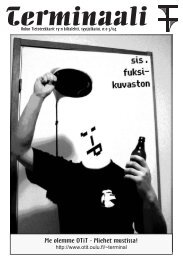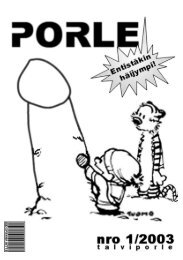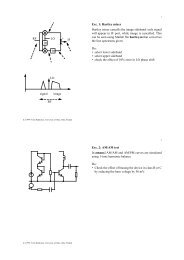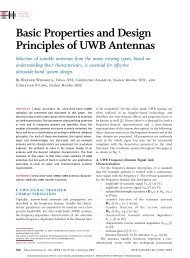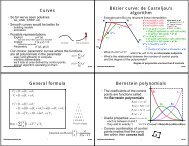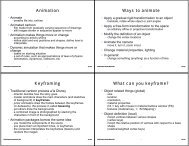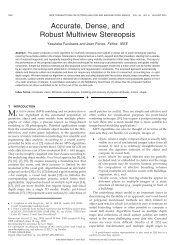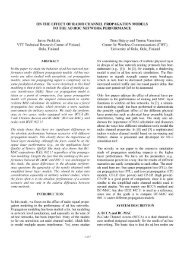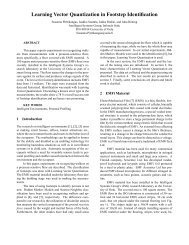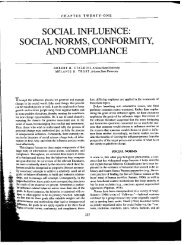Accurate and Practical Calibration of a Depth and Color ... - Oulu
Accurate and Practical Calibration of a Depth and Color ... - Oulu
Accurate and Practical Calibration of a Depth and Color ... - Oulu
Create successful ePaper yourself
Turn your PDF publications into a flip-book with our unique Google optimized e-Paper software.
the inverse <strong>of</strong> the corresponding measurement variance, σ2 c <strong>and</strong> σ2 d . The resulting<br />
cost function is:<br />
c = σ −2<br />
c<br />
� �<br />
(uc − u ′ c) 2 + (vc − v ′ c) 2� + σ −2<br />
�<br />
′<br />
d (d − d ) (7)<br />
Note that (7) is highly non-linear. The Levenberg-Marquardt algorithm is<br />
used to minimize (7) with respect to the calibration parameters. The initialization<br />
gives a very rough guess <strong>of</strong> the depth camera parameters <strong>and</strong> relative pose,<br />
whereas the color camera parameters have fairly good initial values. To account<br />
for this, the non-linear minimization is split in two phases. The first phase uses<br />
fixed parameters for the color camera Lc <strong>and</strong> external pose Tc, <strong>and</strong> optimizes the<br />
depth camera parameters Ld <strong>and</strong> the relative pose Tr. A second minimization is<br />
performed over all the parameters to obtain an optimal estimation.<br />
Variance estimation. An initial estimate <strong>of</strong> the color measurement variance<br />
σ2 c is estimated from the residuals after the first independent calibration. An<br />
estimate <strong>of</strong> the disparity variance σ2 d is obtained from the disparity residuals<br />
after the first non-linear minimization. It is noted that, because Lc <strong>and</strong> Tc are<br />
fixed, the color residuals do not need to be computed <strong>and</strong> σ2 d plays no role in this<br />
minimization. The second minimization stage, when all parameters are refined,<br />
is then run iteratively using the previously obtained residual variances as the<br />
measurement variances for the next step until they converge.<br />
4 Results<br />
We tested our calibration method with an <strong>of</strong>f-the-shelf Kinect device. The device<br />
consists <strong>of</strong> a color camera, an infrared camera <strong>and</strong> an infrared projector arranged<br />
horizontally. The electronics <strong>of</strong> the device compute a depth map for the infrared<br />
image based on the observed pattern from the projector. We ignore the infrared<br />
image <strong>and</strong> use only the depth information <strong>and</strong> treat it as a generic depth <strong>and</strong><br />
color camera pair. We used a dataset <strong>of</strong> 55 images, 35 were used for calibration<br />
<strong>and</strong> 20 for validation. Both sets cover similar depth ranges (0.5m to 2m) <strong>and</strong><br />
a wide range <strong>of</strong> poses. For the validation set, (7) was minimized only over the<br />
external pose Tc to find the best pose for the previously obtained calibration.<br />
Parameters <strong>and</strong> residuals. The obtained calibration parameters <strong>and</strong> their<br />
uncertainties are presented in Table 1. Figure 4 presents histograms <strong>of</strong> the residuals<br />
for the validation set. The formulation <strong>of</strong> our cost function (7) allows us<br />
to use the uncertainty analysis presented by Hartley <strong>and</strong> Zisserman [11]. They<br />
show that the covariance <strong>of</strong> the estimated parameters ΣP can be obtained directly<br />
from the Jacobian <strong>of</strong> the cost function J <strong>and</strong> the covariance <strong>of</strong> the measurements<br />
ΣX using:<br />
ΣP = � J ⊤ ΣXJ �−1<br />
(8)<br />
<strong>Depth</strong> uncertainty. The disparity errors are well modeled by a gaussian distribution.<br />
Using (4) <strong>and</strong> the estimated disparity variance, we obtained numerically<br />
the expected variance in depth for each disparity value. Separate statistics are<br />
computed for each depth present in the validation set to obtain an experimental




